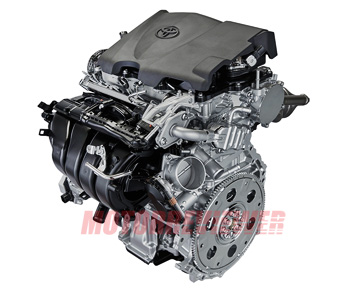A Scotty Kilmer video describes the current trend towards engines with Interference designs and water pumps driven by the engine's timing chain/belt. Even though he calls out Ford, Subaru, and Nissan, it appears that all new Toyota engines, at least the "Dynamic Force" ones, are also in the same boat. More specifically, the MY2019-2020 Avalon Hybrid engine, code name A25A-FXS, is part of the Dynamic Force family. This video from Toyota shows the Interference design (valves protruding into the piston travel area) and why they did this (increased tumble flow), in addition to a diagram showing the integrated water pump. The devil is in the details though, so I trust hopefully that if the water pump fails, Toyota designed it so that the leaking coolant will not contaminate the engine. Can anyone verify this? As for the timing belt/chain failure causing catastrophic valve damage, well, nothing we can do about this except proactive replacement and hope for the best. Here are a few snapshots from the Toyota video that verify this information:
![297365 297365]()
![297366 297366]()
Source: New 2.5-liter Direct-injection, Inline 4-cylinder Gasoline Engine | Toyota Motor Corporation Official Global Website
Source: New 2.5-liter Direct-injection, Inline 4-cylinder Gasoline Engine | Toyota Motor Corporation Official Global Website






